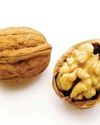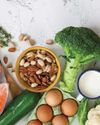Versuchen GOLD - Frei
Are Beans Friend Or Foe?
Better Nutrition
|August 2018
The truth about legumes.

If you’re a fan or a follower of the Paleo diet, you’ve probably heard that beans are second only to grains in their ability to damage your gut, increase your weight, and generally harm your health. But most studies agree that people who eat beans have a lower risk of heart disease, cancer, and overall mortality. So are beans friend or foe? As with most things, the truth lies somewhere in the middle.
Beans contain a multitude of nutrients. They’re low in fat, high in protein (15–20 grams per cup), and rich in magnesium, folate, zinc, copper, iron, phosphorous, and other vitamins and minerals. And dark-colored varieties such as red, black, and kidney beans are loaded with cancer-protective antioxidants.
But fiber is where beans really shine. One cup of navy beans, for example, contains 20 grams of fiber, which is about 70 percent of the recommended daily value. Beans also contain resistant starch, which encourages the growth of beneficial bacteria, lowers blood sugar, improves insulin sensitivity, reduces cholesterol and triglycerides, and may protect against colon cancer.
On the other hand, beans also contain compounds that can interfere with nutrient absorption, irritate the gut, and cause digestive issues. Turn the page for a look at each of these compounds, and ways to keep them from interfering with your continued enjoyment of beans.
1 Phytates. Beans and other legumes, grains, nuts, and seeds store phosphorous as phytic acid—called phytate when it’s bound to a mineral in the seed. Phytates are an energy source for the sprouting seeds, and also prevent them from sprouting prematurely. But phytates can interfere with the body’s absorption of minerals, including zinc, iron, manganese, and, to a small degree, calcium. They can also make proteins, fats, and starches harder to digest.
Diese Geschichte stammt aus der August 2018-Ausgabe von Better Nutrition.
Abonnieren Sie Magzter GOLD, um auf Tausende kuratierter Premium-Geschichten und über 9.000 Zeitschriften und Zeitungen zuzugreifen.
Sie sind bereits Abonnent? Anmelden
WEITERE GESCHICHTEN VON Better Nutrition

Better Nutrition
Strike A Healing Chord
Soothe your mind, body, and spirit with three simple sound therapy techniques for self-care.
7 mins
January 2022

Better Nutrition
Laura's Gourmet Granola
If you’re tired of granola that’s more candy than health food, chef and entrepreneur Laura Briscoe’s offerings are just what you’ve been looking for.
4 mins
January 2022

Better Nutrition
News Bites
Caffeine, Peanuts, CoQ10, and Iron Deficiency.
4 mins
January 2022

Better Nutrition
The Overlooked Keys to a Healthy Gallbladder
Keep your bile thin and free-flowing by focusing on supportive foods, supplements, and physical activity.
6 mins
January 2022

Better Nutrition
Go Nutty This Year
This über-healthy alternative to traditional lattes features homemadewalnut “mylk,” along with antioxidant-rich green tea and berries.
5 mins
January 2022

Better Nutrition
The Three Stages of Infection
What you need before, during and after an illness, and why you need different fixes for each stage.
6 mins
January 2022
Better Nutrition
Taming the Flames
How to beat back chronic inflammation and protect yourself from related disease.
6 mins
January 2022

Better Nutrition
Deconstructing the Flexitarian Diet
How being a part-time vegan can make you healthier.
4 mins
January 2022

Better Nutrition
Brain Regain
How one senior used a leptin-focused diet (high-fat, no carbs) to recover from a cognitive injury, reconnect with his family, and reclaim his health.
4 mins
January 2022

Better Nutrition
Healthy Aging— Head To Toe
Science-backed supplements to protect all your parts.
5 mins
December 2021
Translate
Change font size
